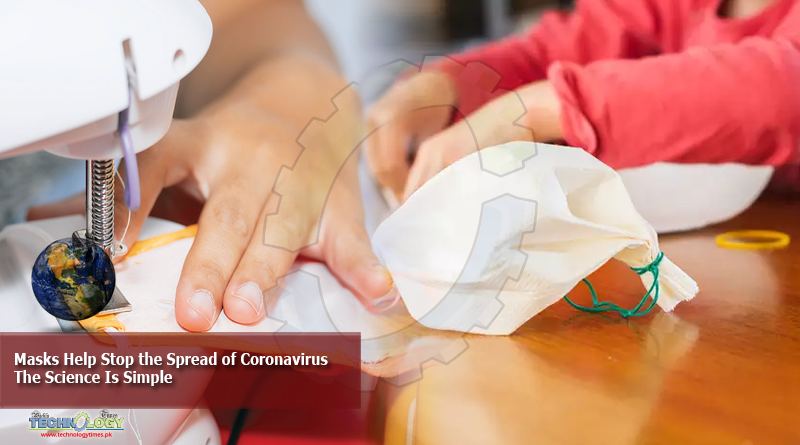Universal mask-wearing could be one of the most important tools in tackling the spread of Coronavirus.

I’m a data scientist at the University of San Francisco and teach courses online in machine learning for fast.ai. In late March, I decided to use public mask-wearing as a case study to show my students how to combine and analyze diverse types of data and evidence.
Much to my surprise, I discovered that the evidence for wearing masks in public was very strong. It appeared that universal mask-wearing could be one of the most important tools in tackling the spread of COVID-19. Yet the people around me weren’t wearing masks and health organizations in the U.S. weren’t recommending their use.
I, along with 18 other experts from a variety of disciplines, conducted a review of the research on public mask-wearing as a tool to slow the spread SARS-CoV-2. We published a preprint of our paper on April 12 and it is now awaiting peer review at the Proceedings of the National Academy of Sciences.
Since then, there have been many more reviews that support mask-wearing.
On May 14, I and 100 of the world’s top academics released an open letter to all U.S. governors asking that “officials require cloth masks to be worn in all public places, such as stores, transportation systems, and public buildings.”
Currently, the U.S. Centers for Disease Control and Prevention recommends that everyone wears a mask – as do the governments covering 90% of the world’s population – but, so far,spread of Coronavirus only 12 states in the U.S. require it. In the majority of the remaining states, the CDC recommendation has not been enough: Most people do not currently wear masks. However, things are changing fast. Every week more and more jurisdictions require mask use in public. As I write this, there are now 94 countries that have made this move.
So what is this evidence that has led myself and so many scientists to believe so strongly in masks?
The evidence
The research that first convinced me was a laser light-scattering experiment. Researchers from the National Institutes of Health used lasers to illuminate and count how many droplets of saliva were flung into the air by a person talking with and without a face mask. The paper was only recently published officially, but I saw a YouTube video showing the experiment in early March. The results spread of Coronavirus are shockingly obvious in the video. When the researcher used a simple cloth face cover, nearly all the droplets were blocked.
This evidence is only relevant if COVID-19 is transmitted by droplets from a person’s mouth. It is. There are many documented super-spreading cases connected with activities – like singing in enclosed spaces – that create a lot of droplets.
While just how much of a role these small particles play in transmission remains to be seen, recent research suggests that cloth masks are also effective at reducing the spread of these smaller particles. In a paper that has not yet been peer-reviewed, researchers found that micro-droplets fell out of the air within 1.5 meters of the person who was wearing a mask, versus 5 meters for those not wearing masks. When combined with social distancing, this suggests that masks can effectively reduce transmission via micro-droplets.
Originally Publish at: https://www.snopes.com/
